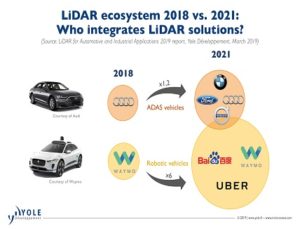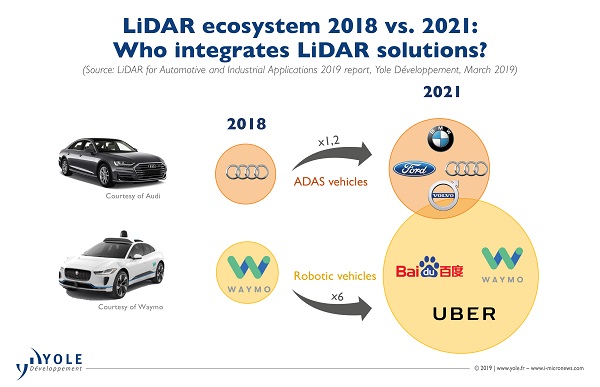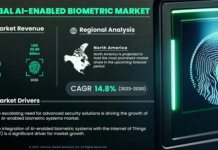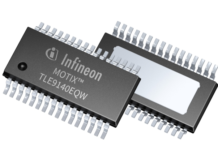
The automotive LiDAR story began with a race. The DARPA Grand Challenge was an autonomous vehicle race to encourage the development of fully autonomous ground vehicles. In 2005, for the second instance of that race, LiDAR was introduced. Two years later, in 2007, five of the six vehicles finishing that race embedded a LiDAR on their roofs. Since then, many companies have made their own prototypes of autonomous vehicles using LiDAR and carmakers have showed their interest in this technology. The development of robotic vehicles is accelerating, and one leader has emerged.
“Waymo has a fleet of more than 600 vehicles today,” comments Alexis Debray, PhD. Technology & Market Analyst at Yole. “Several announcements have been made about increasing this number up to 82,000 vehicles using Chrysler Pacifica Hybrid minivans and Jaguar I-Pace SUVs .” Alexis had the opportunity to give his vision of the industry and detail the latest technical issues for each type of LiDAR players at SSI International Conference 2019 last week. His “LiDAR: from space to roads” presentation is now available on i-micronews.com, SSI International Conference post show report.

On the carmaker side, Audi has integrated a LiDAR, supplied by Valeo, in the A8 since the end of 2017. It is now expanding this feature to other vehicles such as the Q8, A7 and A6 as an option.
“LiDAR adoption is so on track and other carmakers have announced or are expected to integrate this technology in future vehicles”, confirms Pierrick Boulay, Technology & Market Analyst at Yole. BMW with its partnership with Innoviz, for example is part of them.
Yole announces a total LiDAR market to reach US$6 billion by 2024 with 70% of the total market dedicated to automotive applications. Highly and fully automated driving is about to become reality in the very near future. Driven by lower production costs and the emergence of new technologies, LiDAR is becoming a key component for automotive applications and we expect this market to explode, with a 64% CAGR between 2018 and 2024.
Under this dynamic context, System Plus Consulting, part of Yole Group of Companies including Yole and Knowmade has deeply analyzed the innovative laser scanner developed by Valeo and Ibeo.
Named SCALA, this laser scanner was developed through the strategic partnership between both players, to propose a mechanical 3D scanner laser capable of identifying objects and measuring the distance in any environment. This innovation has been designed for vehicles with ADAS and autonomous driving functions.
“An embedded rotating mirror deflects the beam emitted by a high-power laser diode through an emitting lens and receives the returned reflections through a condenser lens”, explains Sylvain Hallereau, Project Manager in charge of costing analyses at System Plus Consulting. “A three-element avalanche photodiode array then captures the reflections. ToF’s measurement of the travel time of this pulse enables the system to determine the distance from the obstacle.”
The laser selected by Valeo and Ibeo is a high-power pulsed laser diode based on EEL diode technology from Laser Components. The three stacked active layers deliver a peak power of 75W in 150ns long pulses. The laser comes in a can package. In parallel, ToF is measured by an avalanche photodiode array developed by First Sensor. This company proposes a silicon-based device, assembled thanks to a low cost PCB package with a glass window. The two main optical components are assembled on the same PCB.
With its Lidar for Automotive & Industrial Applications report, the company pursues its investigations to understand the latest technical challenges and the strategy of each players. Yole’s analysts identified strong investments in this sector. Competition is fierce and lot of announcements related to innovative technologies and investments have been made towards the media community, all year long.



















